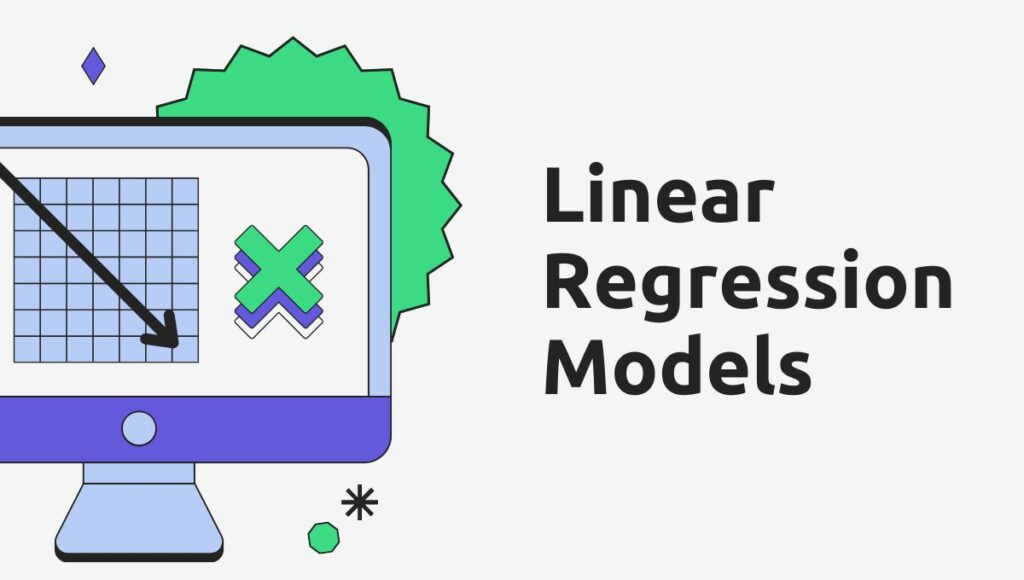When developing linear regression models, selecting the right features is essential for enhancing the model's efficiency, accuracy, and interpretability. Feature Selection in the context of linear regression involves pinpointing the most relevant predictors that contribute positively to the model's performance while minimizing the risk of overfitting.
This guide aims to provide readers with insights into the significance of feature selection, various techniques used to select features effectively, and the skills needed for mastering these techniques, which can be acquired through a comprehensive data science course. By understanding these concepts, readers can significantly improve their modelling efforts and achieve more reliable outcomes.
Understanding Linear Regression Models
This type of output prediction technique is based on the Linear Regression Models, which are statistical tools developed to study the relationships that exist between one or more independent variables, usually called predictors, and a dependent variable, that we want to forecast. These models will identify, based on historical data, which predictor variables most influence the outcome.
The process begins with a comprehensive dataset collection that contains independent variables and the dependent variable. The linear regression algorithms check the strength and nature of the relationships among these variables, and the analysts then understand how changes in predictors affect the predicted outcome.
However, selection of predictors for the model calls for caution. Relevant but redundant variables included would precipitate a phenomenon named as overfitting where the model could result to be too specific with respect to the given data. This could potentially create a poor generalisation performance of new data items while reducing the accuracy. Higher numbers of variables imply high computational load that implies models become less efficient.
Challenges arise when Feature Selection is crucially needed in the modulating process. That would involve identifying and retaining meaningful contributors towards the predictive power of a model. The whole approach simplifies the models that analysts use for a particular problem, and those simplifications help enhance precision and reduce computational loads along with improving performance in testing data.
Why Feature Selection in Linear Regression Matters
Including too many features in Linear Regression Models can dilute predictive power, leading to complexity without meaningful insight. Effective Feature Selection enhances model interpretability, reduces training time, and often improves performance by focusing on the most significant predictors. With well-chosen features, you can build robust, efficient models that perform well in production and real-world applications.
Linear Regression Feature Selection Techniques
To achieve optimal Feature Selection in Linear Regression, it is essential to understand and apply the right techniques. The following methods are widely used for selecting the Best Features for Linear Regression:
Filter Methods
Filter methods evaluate each predictor independently and rank them based on statistical relevance to the target variable. Common metrics used include correlation, variance thresholding, and mutual information.
- Correlation Thresholding: A high correlation between predictors can introduce multicollinearity, which can skew model interpretation. By setting a threshold, only the most independent variables are retained.
- Variance Thresholding: Low variance in predictors often implies minimal predictive power. Removing these predictors can streamline the model and improve accuracy.
These simple yet powerful techniques help narrow down relevant predictors, ensuring that only valuable features enter the model.
Wrapper Methods
Wrapper methods evaluate feature subsets by training the model on various combinations of predictors. Popular techniques include forward selection, backward elimination, and recursive feature elimination.
- Forward Selection: Starting with no predictors, this method adds one feature at a time based on performance improvement. Once no further improvement is observed, the process stops.
- Backward Elimination: These start with all the predictor variables and iteratively remove any predictor that fails to significantly contribute to model fit.
- Recursive Feature Elimination (RFE): It ranks predictors by their importance and iteratively removes the least important features. RFE works well with linear regression models as it aligns features based on their contribution to predictive power.
Embedded Methods
Embedded methods incorporate feature selection directly during model training. Regularisation techniques such as Lasso and Ridge regression are commonly used for Linear Regression Feature Selection Techniques.
- Lasso Regression (L1 Regularisation): By penalising the model for large coefficients, Lasso can effectively zero out less critical features, simplifying the model and improving interpretability.
- Ridge Regression (L2 Regularisation): While it does not eliminate features, Ridge regression penalises large coefficients, reducing the impact of less significant variables.
Embedded methods are efficient as they integrate feature selection within the model training process, balancing model complexity and performance.
Selecting the Best Features for Linear Regression Models
Choosing the Best Features for Linear Regression depends on the data and objectives of the model. Some of the steps you can use to find the appropriate features for your model are given below:
- Exploratory Data Analysis (EDA): Before feature selection, use EDA to understand data distribution, relationships, and possible outliers.
- Apply Correlation Analysis: Correlation matrices show relationships between features or indicate the presence of multicollinearity.
- Try Feature Selection Methods: Try filter, wrapper, and embedded methods to see which one best suits your dataset.
- Validate with Cross-Validation: Cross-validation will ensure that the chosen features generalise well across different data samples. This is used to avoid over-fitting.
Improving Your Skills through a Data Science Course
Feature Selection in Linear Regression is a must-learn for aspiring data scientists. The quality of the course in data science can be visualised from the amount of hands-on experience and theoretical knowledge it imparts to cater to real-world challenges. Such learning skills can be learned to perfection with the Postgraduate Program in Data Science and Analytics offered by Imarticus Learning.
Program Overview
- Duration: This is a 6-month course with classroom and online training.
- 100% Job Assurance: Students are guaranteed ten interview opportunities with leading companies.
- Project-Based Learning: It includes over 25 projects and more than ten tools for a practical approach to data science concepts.
- Curriculum Focus: The emphasis is on data science, Python, SQL, data analytics, and using tools like Power BI and Tableau.
- Faculty: Only industry-working professionals are targeted.
Curriculum
- Foundational Skills: A very deep foundation is laid in programming and data handling.
- Advanced Topics: Topics like statistics, machine learning, and specialised tracks in AI and advanced machine learning.
- Capstone Project: A hands-on project that solidifies understanding and showcases practical application.
- Career Preparation: Interview preparation and career guidance to enhance job readiness.
Key Features of the Course
- 100% Job Assurance: The curriculum is designed to prepare students for top roles in data science, with interviews guaranteed at 500+ partner companies.
- Real-World Learning: Through 25+ projects and interactive modules, students gain skills relevant to industry demands.
- Comprehensive Career Support: Services include a CV and LinkedIn profile building, interview practice, and mentorship.
Outcomes and Success Stories
- Placement Success: There were more than 1500 students placed, and the highest salary offered during the recruitment process was 22.5 LPA.
- Salary Growth: The average growth in the salary of a graduate has been 52%.
- Industry Recognition: With over 400 hiring partners, this course is highly recognised as a top pick for data science professionals.
Eligibility
Fresh graduates or professionals with 0-3 years of experience in related fields would benefit from attending this course. Candidates with a current CTC below 4 LPA are eligible.
Conclusion
Selecting the best features for linear regression models requires a deep understanding of both data and available techniques. By implementing Feature Selection methods and continuously refining the model, data scientists can build efficient and powerful predictive models. A data science course would be ideal for someone to consolidate their knowledge, skills, and real-world practice.
FAQs
What is feature selection in linear regression, and why is it important?
Feature selection in a linear regression models refers to picking the most meaningful predictors to enhance the effectiveness and efficiency of the model's accuracy. A feature selection reduces overfitting and enhances the interpretability of the model and its training time, which boosts performance in real-world settings.
How do filter methods help in feature selection?
Filter methods rank features based on statistical relevance. By evaluating each predictor independently, correlation and variance thresholding help identify the most significant features, reducing noise and multicollinearity.
What are the main benefits of Lasso and Ridge regression for feature selection?
Lasso regression (L1 regularisation) can eliminate less critical features, simplifying the model. While not removing features, ridge regression (L2 regularisation) reduces the impact of less significant variables, helping avoid overfitting in linear regression models.
How does feature selection affect model interpretability?
Feature selection improves model interpretability by focusing on the most influential features, making it easier to understand which predictors impact the outcome. This is especially valuable for decision-makers using model insights in business contexts.
What practical skills can I gain from a data science course on feature selection and linear regression?
An entire data science course will give practical experience in programming, conducting data analysis, and doing feature selection techniques. Students will gain industry-standard tools and practical uses, preparing them for applied industry data science roles.









